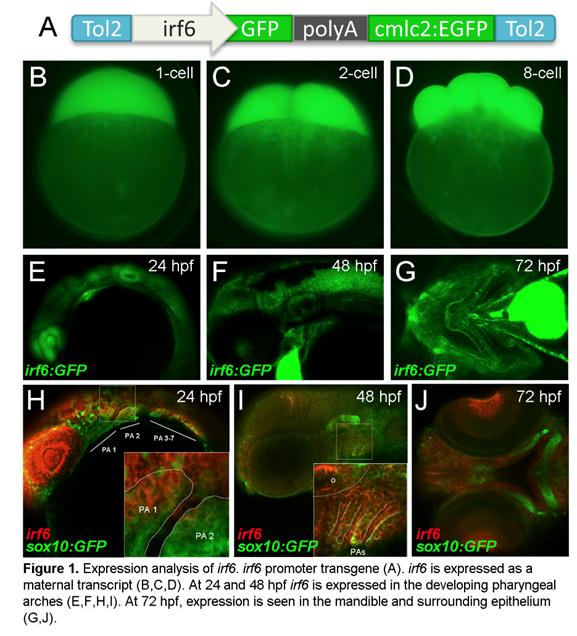
|
|
|
Back to Annual Meeting Program A novel transgenic line with irf6 driving expression of reporter. George N. Kamel, MD, Max Dougherty, Valeriy Shubinets, Lisa Gfrerer, M.D., Eric C. Liao, MD, PhD Massachusetts General Hospital, Boston, MA, USA
Background: Cleft lip and palate is the most common craniofacial birth defect where improved understanding of the genetic and embryological basis that underlies this malformation is necessary to identify potential molecular targets to innovate treatments or prevention. Human mutation of transcription factor IRF6 results in syndromic cleft lip and palate including Van der Woude and Popliteal Pterygium syndromes. Recently, IRF6 has been confirmed as a key locus for non-syndromic cleft lip and palate from large population genome-wide association studies. In order to better understand the biological function of IRF6 during development, we have isolated the zebrafish irf6 promoter sequence and generated a reporter transgenic (Tg::irf6:eGFP). This irf6 reporter transgenic line allows us to follow irf6 expression throughout development, and provides us with a useful model applicable toward cellular and genetic studies. Methods: A 7.185 kb zebrafish irf6 promoter sequence was amplified from the irf6 bacterial artificial chromosome. The Tg::irf6:eGFP transgenic animal was generated using Gateway system, with Tol2 transposase mediating germline integration. Progeny of stable transgenic lines were analyzed by compound and confocal microscopy and compared to whole-mount colorimetric in situ hybridization expression patterns of irf6. Back to Annual Meeting Program
|
||||||||
 |
 |
 |
 |
 |
 |
© 2025 Northeastern Society of Plastic Surgeons. All Rights Reserved. Privacy Policy.
